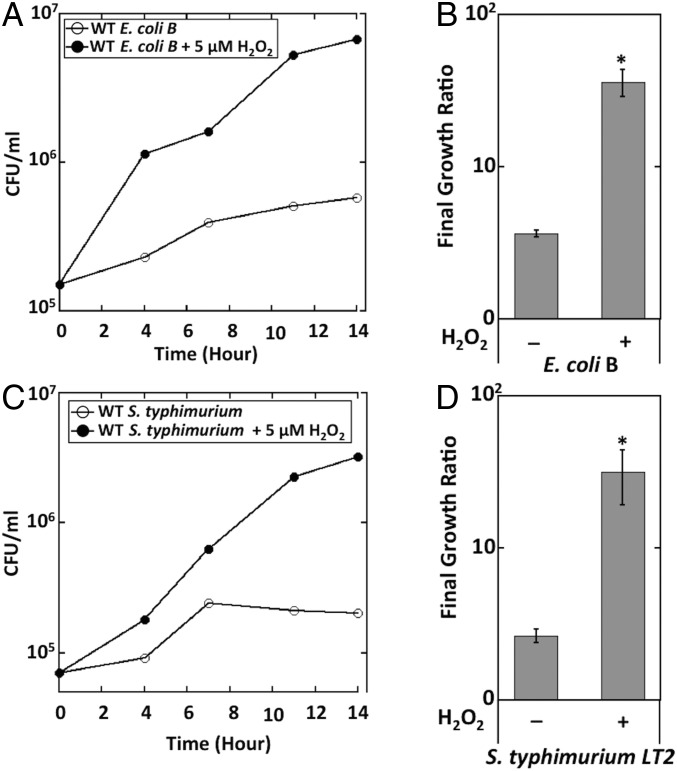Fig. 9.
E. coli B and S. typhimurium LT2 can grow using H2O2 as the final electron acceptor. (A) Wild-type E. coli B cells were grown in anoxic glycerol medium without any electron acceptor (○) or in the presence of 5 μM H2O2 (●). Viable cells (cfus) were determined at different time points. (B) The initial (t = 0) and the final (14-h) time points from three biological replicates of A were used to calculate the growth ratio for each growth condition. (C) Wild-type S. typhimurium LT2 was grown in anoxic glycerol medium without any electron acceptor (○) or in the presence of 5 μM H2O2 (●). Viable cells (cfus) were determined at different time points. (D) The initial (t = 0) and the final (14-h) time points from three biological replicates of A were used to calculate the growth ratio for each growth condition. Asterisks represent statistical significance compared with growth with no terminal acceptor (*P ≤ 0.05; **P ≤ 0.01; ***P ≤ 0.001; ns, P > 0.05).

